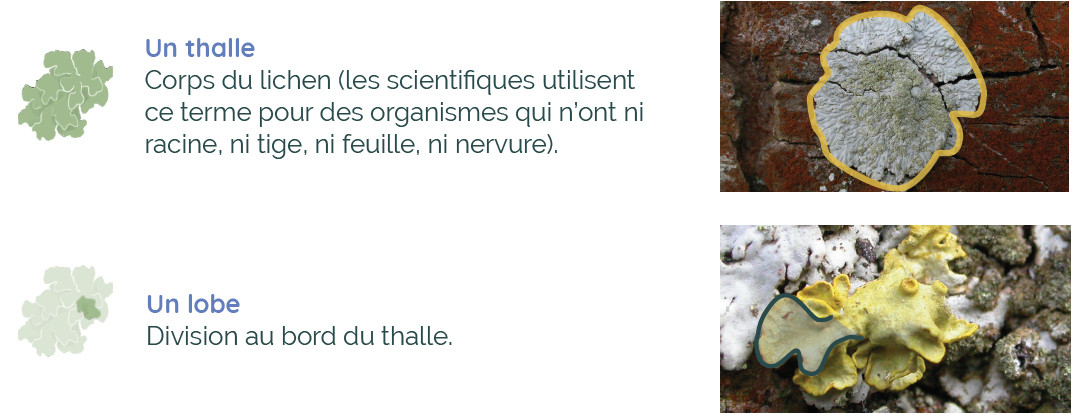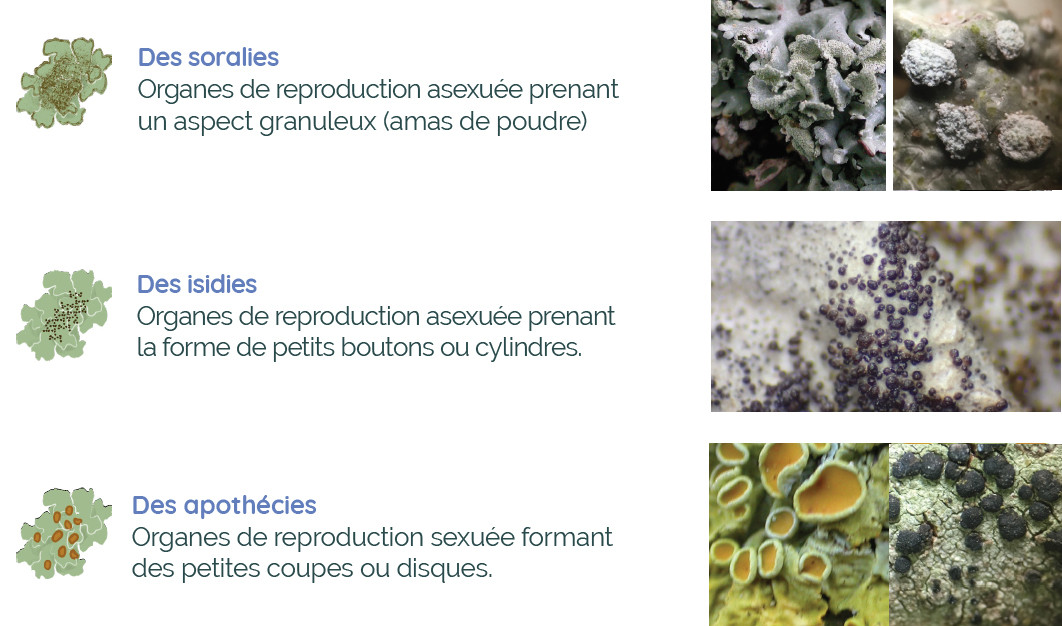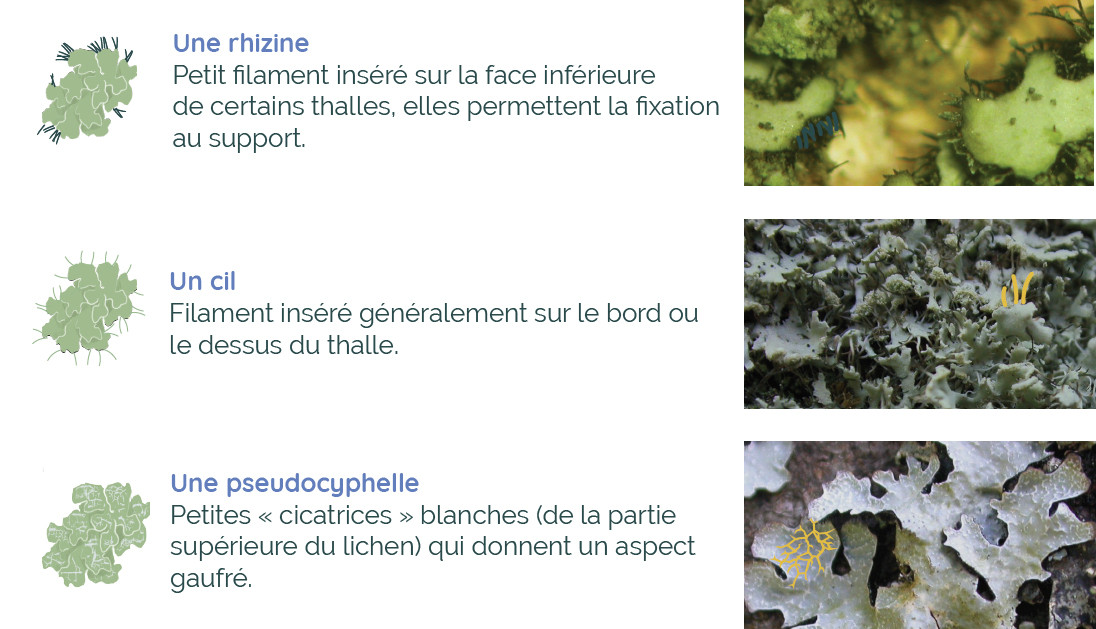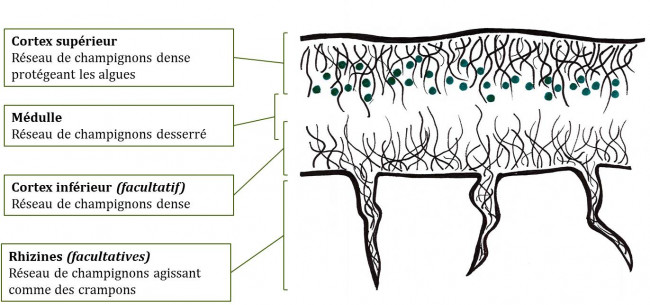Shape, colour, size: there is something for everyone...
Lichens can be confused with certain mosses or algae. Lichens vary greatly in size, colour and shape and are grouped into families according to their morphological characteristics, such as the thallus, cilia, rhizines and reproductive organs, which we will discuss below. The interior of a lichen is structured in loose networks of fungal filaments, supported by dense networks at the periphery, which form the floor and the roof, as it were. Just below the 'roof' and protected by it is a layer of algal cells.
The body of the lichen, the thallus:
One of the ways of describing the diversity of shapes and colours of lichens is to characterise the thallus, which is the body of the lichen. This term is used for organisms that have no roots, stems, leaves or veins.
The lichen thallus is the result of a symbiosis between a fungus and an alga. Each species of lichen is the result of a different association between these organisms. To differentiate between them it is useful to look at the shape of the thallus, which allows them to be grouped into three categories, described in the next section.
The thallus is divided into small parts called lobes.
Types of lichens:
- The fruticose lichens are strip-shaped or bushy. They are only held by a small section of the thallus on the support and are easily detached.
- The foliaceous lichens are composed of several lobes, resembling leaves. Apart from the edges, the entire thallus is attached to the substrate. However, they can be detached with the fingernail.
- Crustose lichens are crust- or spot-shaped. The thallus is very firmly attached to the substrate, as if anchored. It is not possible to detach it from the substrate without damaging it.
The different structures on the thallus :
Additional morphological structures can be found on some lichen thallus which facilitate the identification of lichens:
- Reproduction structures:
- Other structures :
The organisation of the lichen structure :
And inside a lichen, what is there? The 'roof and floor' of the lichen are made up of a very dense network of fungal filaments that protect the algae hidden inside. The roof is called the upper cortex and the floor the lower cortex. In the middle is the medulla. Its structure is similar to that of the cortex, but the filaments of the mushroom are less tightly packed. Just below the upper cortex is the algal layer, which consists of the cells that carry out photosynthesis. Rhizines can sometimes be seen below the floor.







